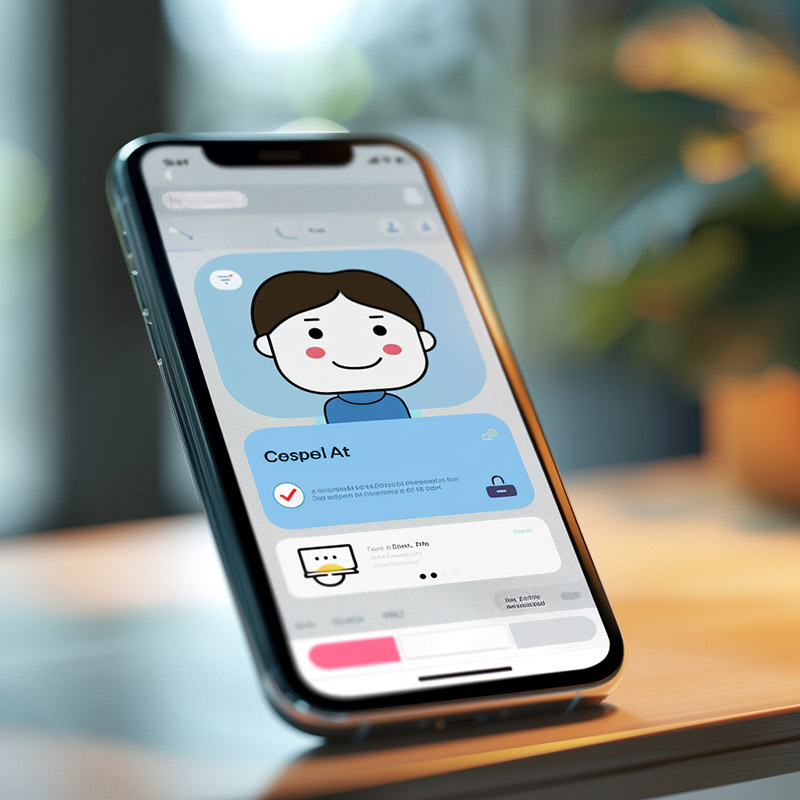1. Advanced Call Routing and Management
AI can intelligently route calls based on caller needs, agent availability, and expertise, ensuring that callers are quickly connected to the most appropriate representative, thus improving customer satisfaction and efficiency.

Call Routing Before AI
Call routing in customer service centers was often a manual and static process, leading to misdirected calls, longer wait times, and a frustrating experience for both customers and agents. This inefficiency resulted in lower satisfaction rates and increased operational costs.
Call Routing After AI
AI-driven call routing and management systems automatically analyze incoming calls, efficiently directing them to the most suitable agent based on expertise and availability. This dynamic approach significantly reduces wait times, improves first-call resolution rates, and enhances overall customer satisfaction by ensuring inquiries are handled by agents best equipped to resolve them.
2. Voice Recognition and Authentication
AI-powered voice recognition systems can authenticate callers by their voice patterns, making the process faster and more secure than traditional PINs or security questions, enhancing security and user convenience.

Authentication Before AI
Traditional authentication methods required customers to remember and input passwords or answer security questions, a process that was both time-consuming and prone to security risks. This could lead to frustration and a negative impact on the customer experience.
Authentication After AI
AI-powered voice recognition systems offer a seamless and secure method for caller authentication, using unique voice patterns for identification. This not only speeds up the authentication process, making it more convenient for users but also enhances security by reducing the risk of fraud and unauthorized access.
3. Real-time Language Translation
AI-driven translation services can instantly translate voice calls between different languages in real-time, breaking down language barriers and enabling seamless communication for global businesses and diverse communities.

Language Barriers Before AI
Language barriers often hindered clear communication in global business and personal calls, requiring human translators or limiting interactions to common languages, which could be cumbersome and restrict access to services for non-native speakers.
Language Barriers After AI
With AI-enabled real-time language translation, voice calls can be instantly translated into multiple languages, breaking down communication barriers. This allows businesses to serve a global customer base more effectively and fosters more inclusive and accessible communication for individuals worldwide.
4. Predictive Analytics for Customer Service
By analyzing call data and customer interactions, AI can predict caller needs and intentions, allowing businesses to offer personalized assistance and proactive solutions, improving customer experience and loyalty.

Customer Service Before AI
Customer service was largely reactive, with representatives responding to issues without prior knowledge of the customer's history or potential needs, leading to longer resolution times and a less personalized experience.
Customer Service After AI
AI uses predictive analytics to analyze customer data and past interactions, enabling service representatives to anticipate needs and offer tailored solutions proactively. This results in a more personalized and efficient customer service experience, increasing satisfaction and loyalty.
5. Enhanced Voicemail Management
AI can transcribe voicemails to text and categorize them based on urgency and content, allowing users to quickly address important messages without listening to every voicemail, saving time and improving productivity.

Voicemail Before AI
Managing a high volume of voicemails was time-consuming, requiring individuals to listen to each message in full, which could delay responses to urgent matters and decrease productivity.
Voicemail After AI
AI-enhanced voicemail management systems transcribe and categorize messages by urgency and content, allowing users to quickly identify and prioritize responses. This streamlines communication, saves time, and ensures that important messages are addressed promptly.
6. Automated Customer Support
AI chatbots and virtual assistants can handle routine inquiries and tasks over the phone, freeing human agents to focus on more complex issues, thus increasing operational efficiency and reducing wait times for customers.

Customer Service Before AI
Routine inquiries and basic customer service tasks often overwhelmed live agents, leading to longer wait times and a strain on resources, detracting from the overall service quality.
Customer Service After AI
AI-powered chatbots and virtual assistants can handle a wide range of routine inquiries and tasks autonomously, 24/7. This frees up human agents to focus on more complex issues, reducing wait times and improving the efficiency and effectiveness of customer support services.
7. Sentiment Analysis for Call Center Interactions
AI can analyze the tone, pace, and content of conversations to gauge customer sentiment and satisfaction in real-time, providing valuable feedback to businesses and helping to improve service quality.

Customer Sentiment Analysis Before AI
Gauging customer satisfaction and sentiment was largely manual, relying on post-call surveys that many customers opted not to complete, leading to a gap in feedback and a lack of actionable insights for improving service.
Customer Sentiment Analysis After AI
AI-driven sentiment analysis tools evaluate customer emotions in real-time during calls, providing immediate feedback on customer satisfaction. This allows businesses to adjust strategies on the fly, address concerns promptly, and tailor services to enhance customer experiences.
8. Call Summarization and Insights
AI tools can provide summaries of calls and meetings, highlighting key points, action items, and insights, facilitating better follow-up and decision-making for businesses.

Summarizing Calls Before AI
Important details from meetings and customer calls could be overlooked or forgotten, requiring manual note-taking and follow-up, which was inefficient and sometimes inaccurate.
Summarizing Calls After AI
AI tools offer real-time call summarization, capturing key points, decisions, and action items. This ensures accurate record-keeping, improves follow-up efficiency, and provides valuable insights for decision-making and strategy development.
9. Noise Cancellation and Enhancement
AI algorithms can filter out background noise and enhance voice clarity on calls, ensuring clear communication even in noisy environments, improving the call experience for remote workers and mobile users.

Noise Before AI
Background noise often interfered with the clarity of voice calls, especially in busy environments or during remote work, leading to miscommunication and a poor call experience.
Noise After AI
AI-powered noise cancellation and voice enhancement technologies filter out background noise and improve voice clarity, ensuring clear and effective communication regardless of the surrounding environment, enhancing both personal and professional interactions.
10. Smart Call Scheduling and Reminder Systems
AI can analyze calendars, time zones, and preferences to schedule calls at the most convenient times for all participants and send intelligent reminders, streamlining coordination and reducing missed calls.

Call Scheduling Before AI
Coordinating calls across different time zones and schedules was a complex and error-prone process, often leading to missed calls or scheduling conflicts, impacting productivity and collaboration.
Call Scheduling After AI
AI-driven scheduling systems analyze availability, time zones, and preferences to suggest optimal times for calls, automatically sending intelligent reminders to participants. This streamlines coordination, reduces scheduling conflicts, and ensures more effective communication and collaboration.